
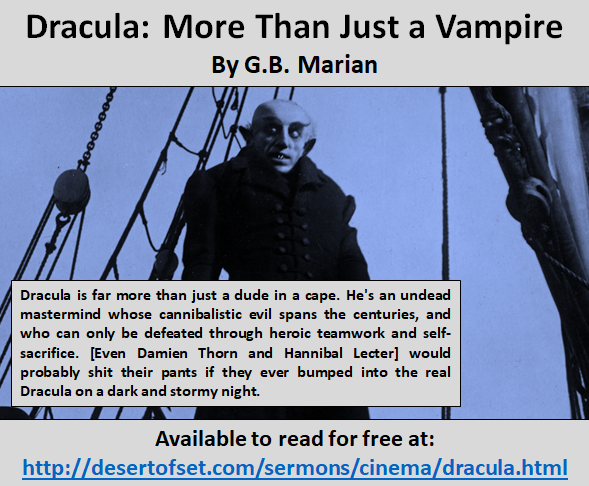
So you’ve heard me talk psychos, and you’ve heard me talk dinosaurs. But it’s high time I finally discussed one of the most important movie monsters of all time. That’s right; I’m talkin’ motherfuckin’ Count Dracula, baby. You can forget all about Freddy Krueger or Jason Voorhees; when’s the last time you ever saw gorgeous supermodels throwing themselves at either one of those guys? Yeah, Dracula’s a total pimp; his victims usually WANT him to put the chomp on them. And when’s the last time Freddy or Jason inspired absolute obedience in a bunch of followers, from other vampires to mere mortals like Renfield and the Gypsies in Bram Stoker’s original novel? That’s right, never. Dracula is far more than just a dude in a cape. He’s an undead mastermind whose cannibalistic evil spans the centuries, and who can only be defeated through heroic teamwork and self-sacrifice. He’s the original Damien Thorn, the original Hannibal Lecter, and even those guys would probably shit their pants if they ever bumped into the real Dracula on a dark and stormy night. Yes sir, the Count is one hardcore son of a bitch, and I’m gonna tell you why.
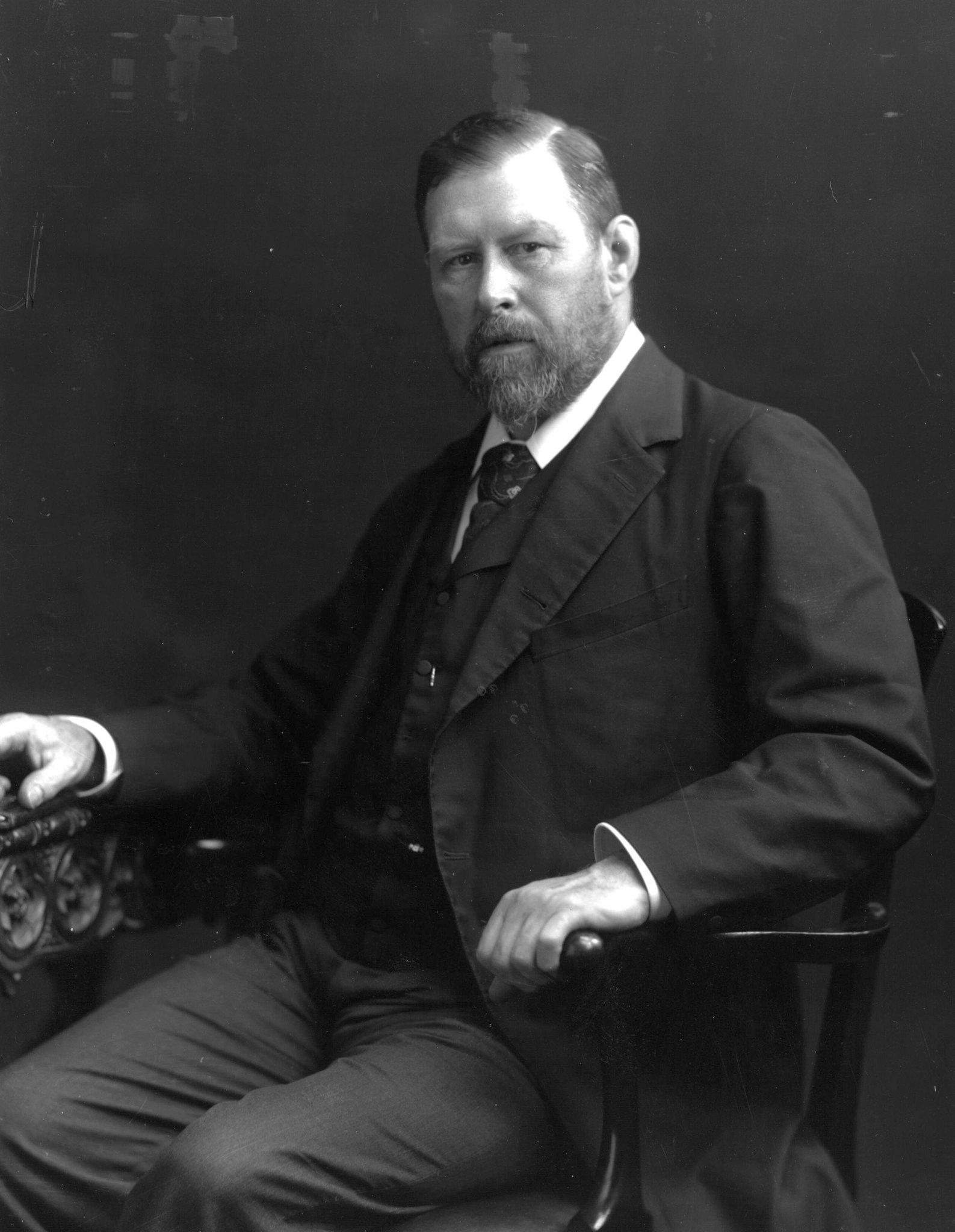
Contrary to common knowledge, there is no evidence that Bram Stoker directly modeled Dracula after Vlad Tepes, the medieval Romanian ruler who impaled people on really big sticks. Despite his penchant for cruelty, Vlad is actually revered in Romania as a folk hero for fighting off the invading Ottoman Turks; he is not shunned as a nightmarish bogeyman at all. He was indeed called Dracula, but this was in reference to his affiliation with Societas Draconistarum (the Order of the Dragon), a chivalric order of knights. The order was dedicated to Saint George, the famous dragon slayer, and they identified as religious crusaders against the Turks, whom they considered to be Satan incarnate. Many sources claim Dracula translates to mean “son of the devil” in Romanian, but this is false. Bram Stoker just took the name for his fictional character, and he only drew from random bits and pieces of Wallachian history, many of which have nothing to do with Vlad the Impaler directly. He also combined these ingredients with elements from the Hungarian Countess Bathory legend, as well as from Irish folk tales of blood-drinking banshees.
Stoker likely drew from the Jack the Ripper murders at Whitechapel as well, which were still fresh on people’s minds when his novel was published in 1897. Stoker’s Dracula practically is a serial killer, but one whose victims (mostly women) come back to life and help him kill even more people (mostly children). Indeed, he has proven to be just as formidable as any slasher villain, appearing in countless books, comics, movies, stageplays, radio dramas, and even children’s cereals. (Who doesn’t like Count Chocula?) Very few cinematic adaptations of Stoker’s novel have been absolutely faithful to the original source material, but this has not stopped the character from developing an immense cult appeal. And while he wasn’t necessarily the first guy to play Dracula on screen, the character’s cinematic history more or less begins with Max Schreck in F.W. Murnau’s silent 1922 classic, Nosferatu: A Symphony of Horror.
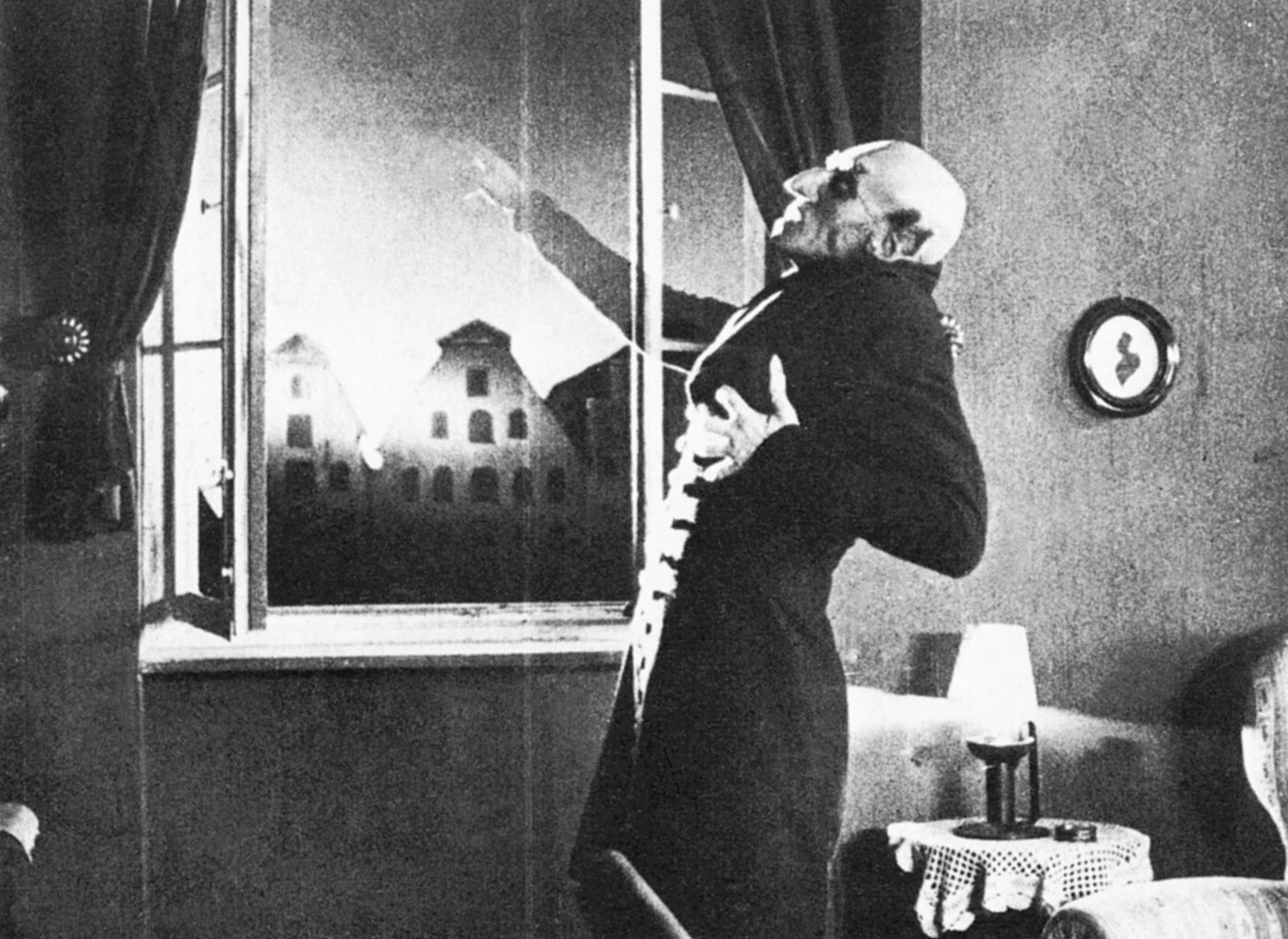
Murnau changed the names of the characters in some later prints of the film to avoid a lawsuit from the Stoker family, who did not approve of him adapting the novel. But make no mistake: Count Orlock is really Count Dracula. And Max Schreck plays the motherfucker like he is Pestilence itself. While we more often romanticize Dracula as some suave aristocrat today, Schreck’s version is filthy, sickly, poisonous, and rodentine. It looks like if he touched you, you’d walk away with Ebola; and the fact that he commands entire armies of rats with the bubonic plague is apocalyptic. (What better way to hide a few cases of vampirism than during a massive epidemic?) I love silent movies because you can substitute your own musical preferences to go with them; I usually enjoy Nosferatu with some Philip Glass, myself. I also love the acting style that’s used in these films; these are stage actors who were trained to over-exaggerate their gestures and expressions so viewers could see and understand them from the back row. Turns out this particular acting style comes in real handy when you’re trying to act without sound!
Some people don’t enjoy silent movies; if this applies to you and you think you won’t enjoy Nosferatu for this reason, you’re in luck. Werner Herzog directed a remake with sound in 1979, and it happens to be my favorite film version of Dracula ever made. It’s really more faithful to the 1922 film than it is to the Stoker novel, following the same changes that Murneau made to the story (apart from the names). But Klaus Kinski doesn’t just play Count Dracula; he plays Max Schreck playing Count Dracula, and with sound. This motherfucker makes some of the scariest noises I’ve ever heard anyone make. Add to this Herzog’s documentarian landscape photography and Popol Vuh’s haunting musical score, and you get one hell of a beautiful movie. The 1979 Nosferatu succeeds in paying homage to its 1922 inspiration while also owning itself as something entirely unique. Most important to this discussion of Dracula, it strikes at the core of Bram Stoker’s character in ways most other popular media do not. Here, Dracula is ugly and sickly, yet also alluring and formidable; he is driven to make the rest of the world as miserable as he is, and that ending scares the fuck out of me (especially in our current era of COVID-19).
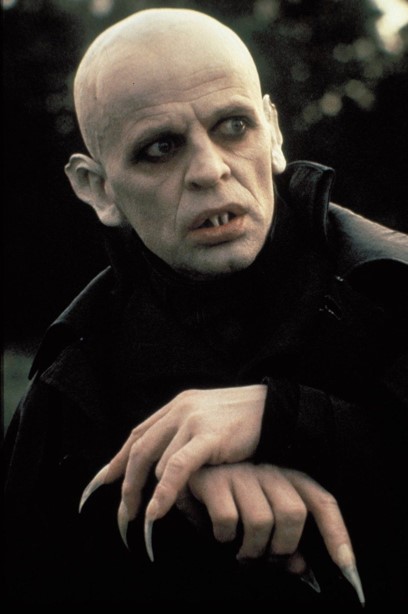
Nosferatu (1922 and 1979) might be my favorite depiction of Dracula, but this isn’t to say I don’t love other versions of the character as well. Here we finally come to the great Bela Lugosi, who is perhaps the gold standard when it comes to cinematic portrayals of the Count. Lugosi knew very little English when he was hired for the role in Universal’s 1931 adaptation; indeed, memorizing his lines was one of the ways he learned the language. His demeanor and charisma continue to provide the default template for most depictions of Dracula today, with the aristocratic cape, the nicely styled hair, and the thick Hungarian accent. This version of Dracula was one of the first films ever to be made with sound, and it seems to me the actors weren’t quite used to the new procedure yet, as the performances are a bit stilted (though in Lugosi’s case, this actually helps, making his character seem more otherworldly).
The 1931 Dracula has no musical score apart from the main and end title sequences. On the one hand, this further enhances the film’s eerie atmosphere; on the other, it causes it to lag with long silences that personally make me fall asleep. Luckily, Universal commissioned Philip Glass to write a score for the movie in the late 1990s, and it was performed by the Kronos Quartet. This score, while not to everyone’s tastes, has always been a welcome addition to me; I think it’s beautiful, and it really makes the film more engaging. However, this is an unconventional viewpoint, as most fans of this particular Dracula would no doubt disagree. All I can say is that good music has always been an essential ingredient for me when it comes to my taste in movies—I’m the nerd who actually pays attention to things like, “Is it orchestral or electronic? A single composer, or several?”—and I enjoy silent movies with music much more than I enjoy “talkies” without music. That being said, the Lugosi Dracula is still one of my favorites, and the Philip Glass score mixes well with the 1922 Nosferatu as a nice alternative.
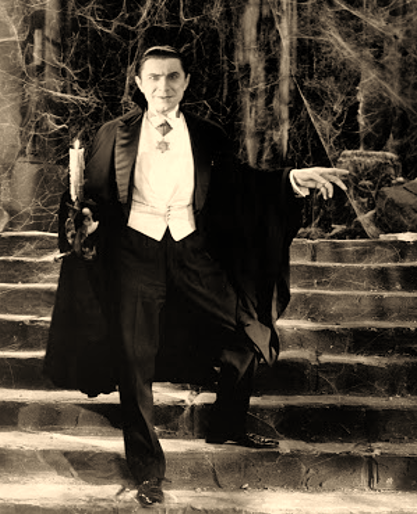
But if anyone apart from Bela Lugosi comes anywhere close to beating either Max Schreck or Klaus Kinski as Count Dracula, it’s Christopher motherfuckin’ Lee. The British Hammer film group produced several of their own Dracula films from the late 1950s to the early 1970s, and most of them star Lee as the vampire. None of them are straight re-tellings of the Bram Stoker story, and they share little continuity with each other to speak of; yet they feature some of the most lavish set designs, color palettes, lush photography, period costumes, and orchestral scores ever. Even the cheesiest of these films (such as Dracula A.D. 1972 or 1974’s The Satanic Rites of Dracula) are uplifted not only by these qualities, but also by the performances of their remarkable casts. Christopher Lee’s Dracula is both a princely gentleman and a bestial rapist; he barely ever speaks, and he’s messy to boot (he really ought to wear a bib). He’s also neither sickly or suave, being more of a ten-foot-tall roadblock that can crush people like empty soda cans. Lee’s Dracula looks like he could handle himself in a fist match with a goddamn Terminator, and he’s just got so much charisma; you almost want to see the bastard get away with all his shenanigans.
Thankfully for the good guys, the Hammer Draculas feature what is perhaps the most iconic film version of Professor Abraham Van Helsing: that of Peter Cushing. Most versions of Van Helsing prior to Cushing’s are largely forgettable, including those seen in both Nosferatus and the Lugosi Dracula. But Peter Cushing turned the character into a dashing action hero who swings from chandeliers, bustin’ vampire fangs with his fists. He doesn’t appear in all of the Hammer Draculas, but he appears in three with Christopher Lee. Perhaps the weirdest of these is The Satanic Rites of Dracula, where the Count has returned in 1970s Britain. He’s taken over the goddam Illuminati and is using them to unleash a mutated version of the bubonic plague upon the entire globe; only Lorimar Van Helsing (Peter Cushing), the current living descendant of Dracula’s arch-nemesis, can stop the fucker. It’s a terrible film, but it also touches on what I mentioned with Nosferatu above. Lee’s Dracula is not just a simple vampire, but an apocalyptic force that seeks to plague and ultimately end humanity altogether. Good thing Cushing’s Van Helsing is there to straighten the motherfucker out (by tricking him into walking through a damn hawthorn bush)!
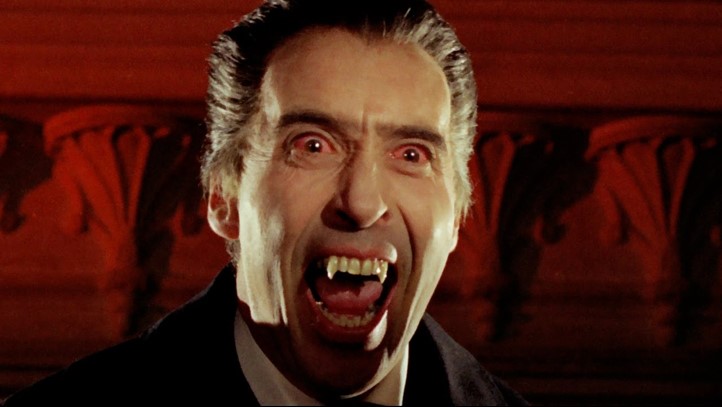
There are two Hammer Dracula films that star Peter Cushing, but which do not feature Christopher Lee. The first of these is The Brides of Dracula (1960), which has a misleading title. It has nothing to do with Dracula himself, but is about Van Helsing fighting a totally unrelated vampire. Despite the absence of Christopher Lee, Brides of Dracula is one of my favorite Hammer movies because it gives Peter Cushing some terrific stunt work to do, and this was when he was younger and could still jump through windows and such. The other Dracula without Christopher Lee is also one of my favorites: The Legend of the Seven Golden Vampires (1974). This was actually a Hammer co-production with the Shaw Brothers, those undisputed kings of the Hong Kong martial arts movie industry. The premise is that Count Dracula teams up with these badass Chinese vampires, and Van Helsing teams up with a bunch of kung-fu warriors to wipe the bastards out. It sounds outrageously goofy, but the film is far better and more entertaining than you’d expect. The kung-fu is top-notch, and the interfaith message is deeply encouraging, with Van Helsing and his pals combining Christian, Buddhist, and Taoist lore to fight the vampires.
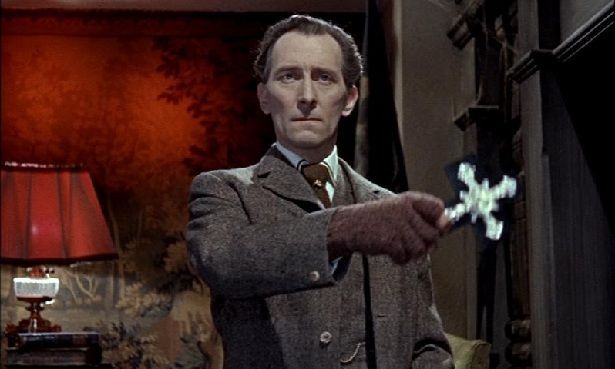
My next favorite Dracula is probably Gary Oldman in Francis Ford Coppola’s Bram Stoker’s Dracula (1992). As with the 1931 Lugosi film, I am of two minds when it comes to this particular version. On the one hand, it’s one of the most beautiful things I’ve ever seen, and it is one of the most faithful adaptations of the novel ever crafted. Gary Oldman is truly frightening in his role, and I’ve always loved that he takes various forms throughout the movie (such as the “Mr.-Burns-with-Butt-Hair-Style” look; the “sexy-John-Lennon-with-goatee” look; and the “killer-mutant-wolf-” and “-bat-creature” looks). On the other hand, it annoys me that Coppola takes such a “romantic” spin on the Count. Keep the fucker scary and mean, don’t waste my time with him snoggin’ Winona Ryder like they’re in some steamy historical drama. When Bram Stoker’s Dracula sticks to being creepy and menacing, it succeeds in being one of the very best films of its kind; but when it switches to being emo and maudlin, it bores the hell out of me. Still, Gary Oldman delivers a fantastic performance that succeeds in being uniquely memorable, and I’m hard-pressed to think of any better candidate for my personal “Fifth Greatest Dracula” spot.
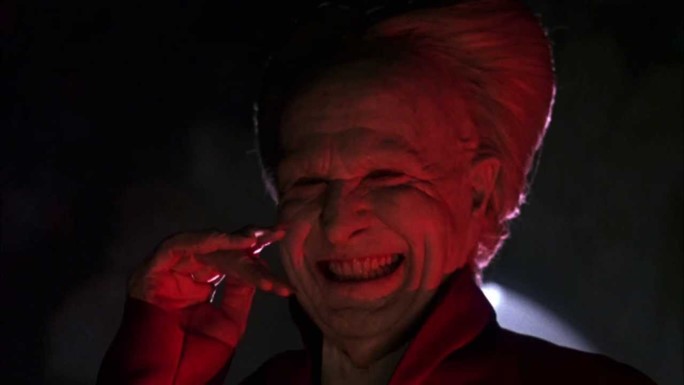
Yet there are many other versions of Dracula to consider apart from these five examples I have offered. Which Dracula or Draculas are your personal favorites?
